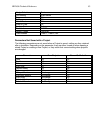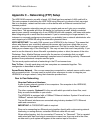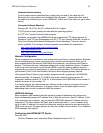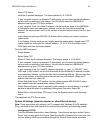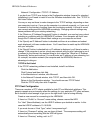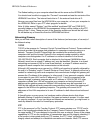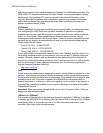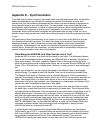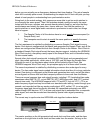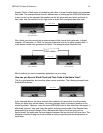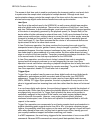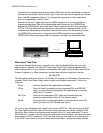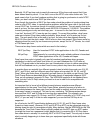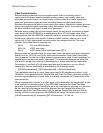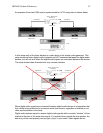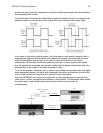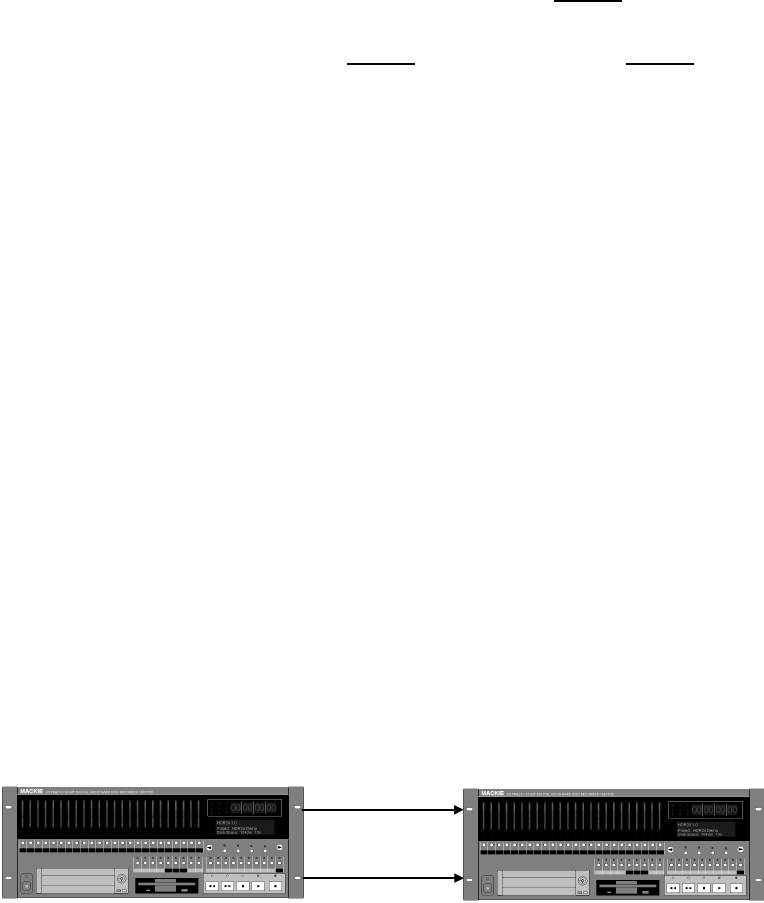
HD24/96 Technical Reference 91
before you can actually see a discrepancy between their time displays. This rate of sample
clock drift is actually quite normal. Understanding the simple fact of clock drift puts you way
ahead of most people in understanding how synchronization works.
Going back to the watch analogy, let’s suppose we were able to get two wrist watches to
run at exactly the same speed. Then if the watches started running at exactly the same
instant with the hours, minutes, and seconds hands perfectly lined up, we know that they
would always read exactly the same time, forever and ever. Just like the watches, to
synchronize two or more digital audio recorders to synchronize to each other, two things
have to happen:
1. The Sample Clocks of all the devices have to run at exactly the same speed (i.e.
Sample Rate), and
2. The transports need to start at exactly the same position at exactly
the same
time.
The first requirement is satisfied by distributing a common Sample Clock signal to every
device. One device is configured as the Master and generates the Sample Clock, and all the
others are configured as Slaves that lock their Sample Clocks to the Master. Word Clock is
a standard Sample Clock signal format that many devices support, including the HDR24/96.
Word Clock runs at a frequency exactly equal to the Sample Rate, and is transmitted using
75-ohm coaxial cable.
Several other clock signal formats exist, including AES Null clock and oversampled word
clock (also called superclock), which runs at 128, 256, and 384 times the Sample Rate.
Although the rest of our discussion about clocks will be limited to Word Clock, (the
HDR24/94 supports Word Clock only), the principles apply to all of these clock formats.
The second requirement is satisfied by distributing a common time code signal to every
device. The time code signal carries coded information about what time it is at any particular
instant. One device is configured as the Master and generates time code, and all the others
are configured as Slaves that lock their transport positions to time code from the Master.
There are several common time code signal formats, including LTC (longitudinal time code,
sometimes called SMPTE LTC, or just SMPTE), MTC (MIDI time code), and VITC (vertical
interval time code). The HDR24/96 supports both LTC and MTC, but not VITC. LTC is an
audio-frequency signal and may be carried over standard audio cabling, routed through your
console, and recorded just like any analog audio signal. MTC, unlike LTC, is not an audio-
frequency signal and cannot be directly recorded; it’s transmitted exclusively over MIDI
cables through MIDI devices. VITC is a time code signal that is embedded into a composite
video signal, and must be encoded and decoded by special video signal processing
devices.
The correct way to synchronize two HDR24/96 units together is shown below:
The master machine on the left generates both word clock and time code, and the slave
machine on the right locks to word clock and time code from the master. As long as the
Master HDR24/96
Slave HDR24/96
Time Code
Word Clock



